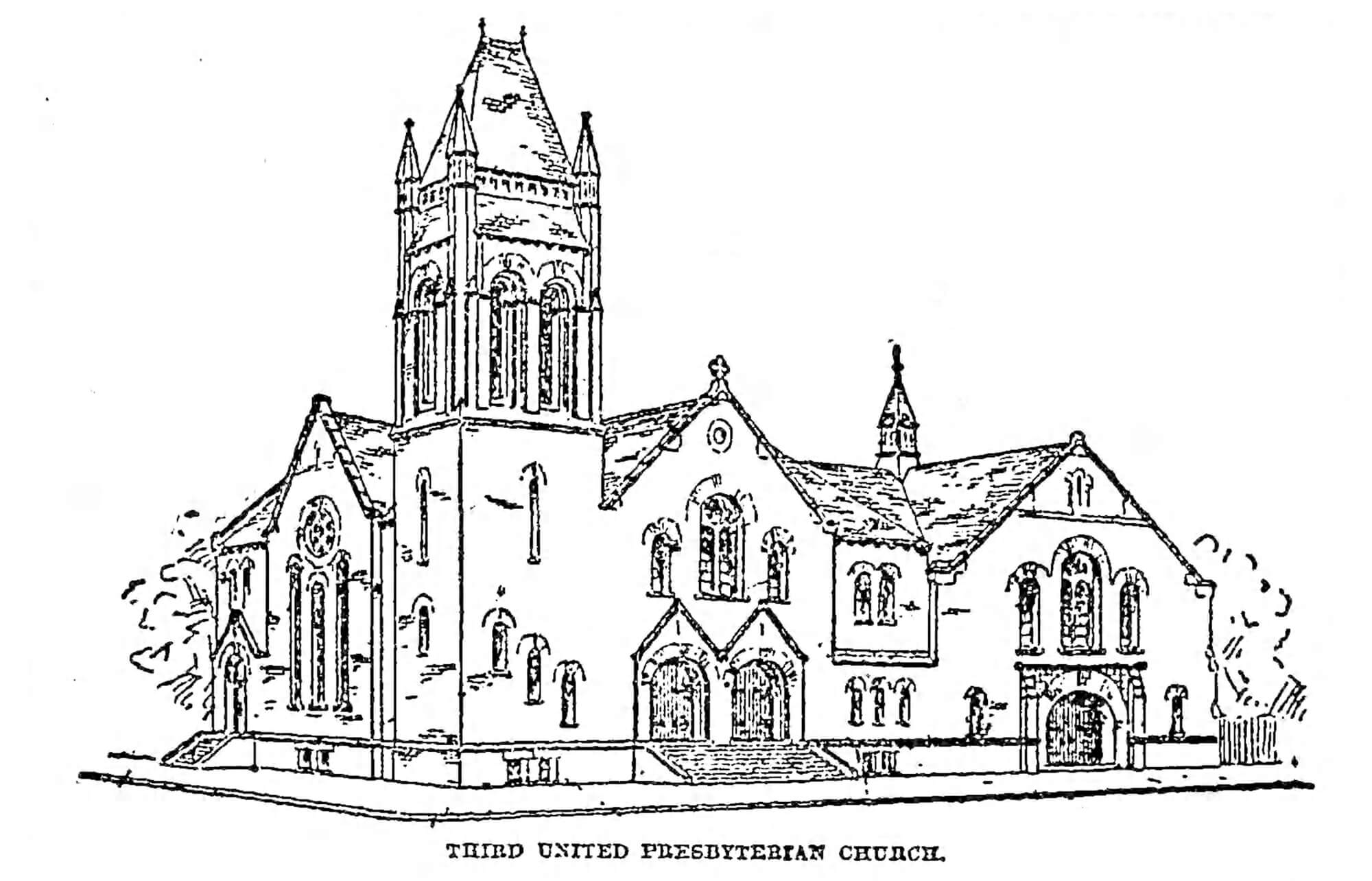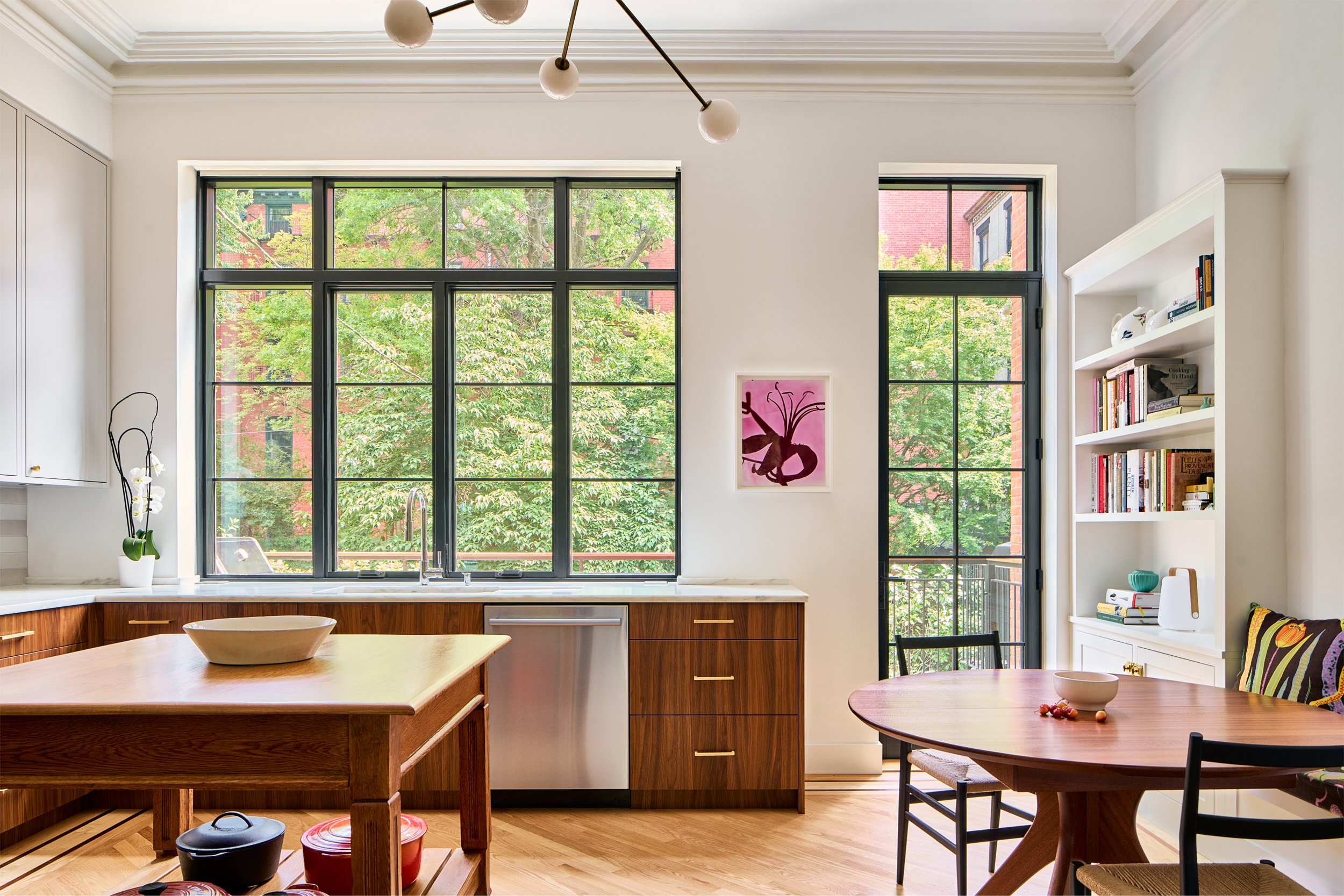A Church With Big Plans Offers a Touch of Green Instead in Ocean Hill
Originally intended to be twice the size, this charming Romanesque Revival church instead offers a garden in Ocean Hill.

It was the 1890s and Brooklyn was booming, expanding ever further as farmland disappeared and rows of houses, businesses and roads spread. This area of Ocean Hill, on what is now Thomas S. Boyland Street but historically known as Hopkinson Avenue, was no different.
As new blockfronts of brownstone and wood-frame houses went up, religious leaders saw an opportunity and a need in the growing neighborhoods. The Brooklyn Daily Eagle reported in 1893 that the establishment of churches was multiplying rapidly in Brooklyn, particularly in the “new upper portion” of the city.

One denomination to take advantage of the boom was the United Presbyterian Church, which in 1892 established the Third United Presbyterian Church on Hopkinson Avenue. Led by Reverend A. H. Crosbie, the small congregation at first worshiped in a storefront on Hopkinson Avenue near MacDonough Street.
By the spring of 1893, the congregation had grown large enough that they were ready to build a new church. Property was purchased at 50-58 Hopkinson Avenue at the corner of Bainbridge Street at the cost of $6,500, according to the Brooklyn Daily Eagle, and plans were made to build a “commodious chapel” first.

The cornerstone for the chapel was laid on June 19, 1894 with an evening ceremony that included a singing procession, a bonfire in the middle of the street and speeches by dignitaries.
The architect credited with the design of the chapel and the planned church was Charles H. Simpson. Little other evidence of his design aesthetic has turned up but his design here met with the needs of the church — a chapel large enough for immediate worship needs with room to expand to the entire corner lot as fundraising permitted.
The Brooklyn Daily Eagle seemed to be unimpressed with the design of the chapel, writing that it was “plain in its architecture,” but was slightly more enthusiastic about the plans for the church as a whole, which would make the corner “attractive architecturally.”

By October of 1894 the new chapel was nearly completed. While the church was founded as Third United Presbyterian Church, newspaper accounts around this time fluctuated between referring to the church on Hopkinson Avenue as Third and as Westminster United Presbyterian Church. By the time of the formal dedication of the chapel in 1896 the congregation, still led by Rev A. H. Crosbie, was consistently known as Westminster United Presbyterian Church. Rev A. H. Crosbie would lead the congregation until 1924.

Building a chapel first was a smart financial move and not an unusual step in the construction of a house of worship — nor was it unusual for the larger structure to go unbuilt, whether because of lack of funds or no need for more space.
This was the case at Westminster United Presbyterian Church. The large open space at the corner of Bainbridge came about because the bigger church was never built, not because something else there was later demolished (as is often the case with empty lots in Brooklyn).
Why exactly architect Charles H. Simpson’s full design for the church remained unbuilt is unclear. When mentioning the capacity of the chapel, contemporary newspaper accounts cited numbers ranging between 400 and 500 worshipers. It is possible the congregation never outgrew the chapel.

While the larger structure was not built, the large lot was retained and the chapel continues in use as a worship space. The petite Romanesque Revival style building is a modest but noteworthy presence on the streetscape. The original red brick facade has been painted gray but the original details are still there. The entry is marked by a large brick archway and above it three arched windows hold stained glass windows with floral and biblical motifs.
The Westminster United Presbyterian Church appears in news accounts and church directories at 58 Hopkinson Avenue until the 1950s. By the early 1970s it was home to the Mount of Olives Seventh Day Adventist Church. In 1980 they sold it to the current occupants, the Brooklyn Tabernacle UHCA. Hopkinson Avenue was renamed Thomas S. Boyland Street after the death of the Democratic New York State Assemblyman, who lived nearby and represented the 54th District, in 1982.
The open space on the corner, increasingly rare and precious, gives a bit of breathing space to the neighborhood.



[Photos by Susan De Vries unless noted otherwise]
Related Stories
- Fort Greene Historic District Manse at Center of House Theft Case Now Listed as a Teardown
- The Bainbridge Street Houses for Modern Living
- Take a Look Inside Park Slope’s Old First Reformed Church, Gleaming After Restoration
Email tips@brownstoner.com with further comments, questions or tips. Follow Brownstoner on Twitter and Instagram, and like us on Facebook.





What's Your Take? Leave a Comment